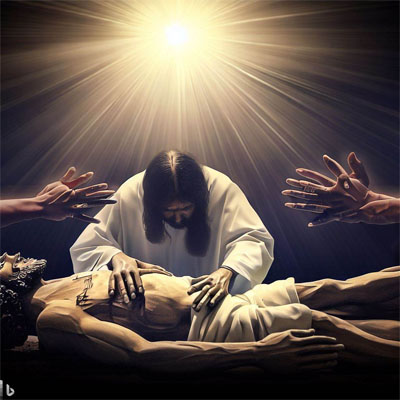Introduction:
Throughout history, the act of laying on hands has been a symbolic and therapeutic practice that bridges the gap between the spiritual and the physical realm. One of the most iconic figures associated with this practice is Jesus of Nazareth, whose healing stories have been passed down through generations in the Christian Bible. This article delves into the biblical accounts of Jesus’s healing through the laying on of hands and examines how this technique has been embraced and adapted by healers throughout time.
Biblical Accounts of Jesus’s Healing:
In the New Testament, Jesus is frequently portrayed as a healer, restoring health to those afflicted with various ailments. The laying on of hands is a common feature of these narratives:
The Leper in Capernaum: In the Gospel of Matthew, a leper approaches Jesus, expressing faith in his ability to heal. Jesus touches him, saying, “I am willing; be cleansed,” and instantly, the man is healed (Matthew 8:1-4).
Jairus’s Daughter: In a moving account, Jesus takes the hand of a deceased girl, saying, “Talitha cumi!” which means, “Little girl, I say to you, get up!” Miraculously, she is restored to life (Mark 5:22-43).
The Blind Men: Two blind men approach Jesus with faith in his power to restore their sight. He touches their eyes, and their vision is restored (Matthew 9:27-31).
These are just a few of the numerous accounts where Jesus heals through touch or the laying on of hands. His actions were not just displays of divine power but were also deeply compassionate gestures that broke societal norms—particularly when he touched those considered “unclean” or marginalized.
Laying on of Hands: Theological and Symbolic Implications:
The act of laying on hands is rich in symbolic and theological meaning:
Physical and Spiritual Connection: Jesus’s touch symbolized the interconnection of the physical and spiritual realms. While the act itself might have brought physical healing, it also represented a deeper spiritual restoration.
Validation and Compassion: In a society where the sick and the afflicted were often ostracized, Jesus’s touch served as a profound validation of their worth, signifying acceptance and compassion.
Transfer of Divine Energy: The laying on of hands is seen as a conduit for the transfer of divine energy or power. This belief, however, is not unique to Christianity but is found in various cultures and religions.
The Legacy of Laying on of Hands in Other Healing Traditions:
Laying on of hands is not an exclusively Christian phenomenon. Across various cultures and religious practices, there’s evidence of healers using touch as a primary means of facilitating healing:
Reiki: Originating from Japan, Reiki is a form of energy healing where practitioners channel “universal energy” through their hands to promote physical and emotional healing.
Qigong: A traditional Chinese practice, Qigong involves the cultivation and balance of life energy, known as “qi”. Some forms of Qigong incorporate hands-on healing, where the healer directs qi to the patient to restore health.
Shamanic Practices: Indigenous cultures worldwide have shamans or medicine people who utilize touch in their healing rituals, channeling spiritual energies to heal afflictions.
Conclusion:
The laying on of hands is a time-honored practice that spans across various cultures and religions, highlighting the universal human belief in the power of touch. While the biblical accounts of Jesus healing with a touch have been particularly influential in the Western world, similar practices can be found across the globe. Whether viewed as a conduit for divine energy, a therapeutic touch, or a symbolic gesture of compassion, the laying on of hands continues to be a powerful testament to humanity’s intrinsic belief in the healing potential of human connection.
Hits: 54

